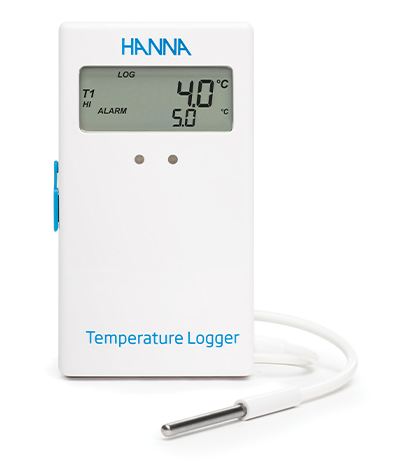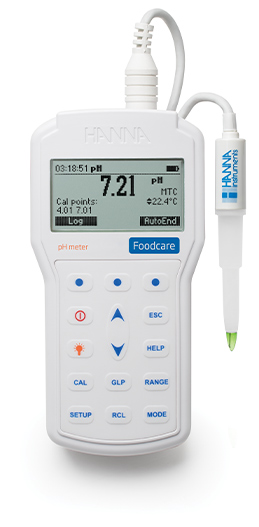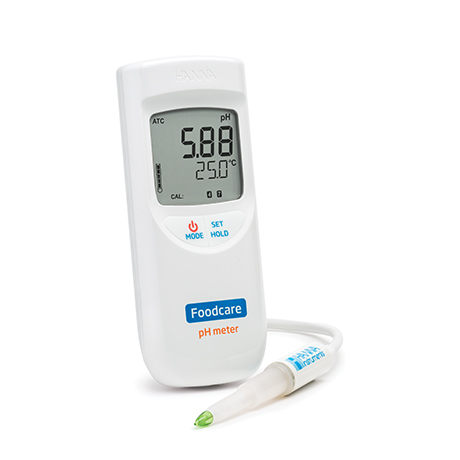Sauerkraut is a fermented product made from cabbage and has its roots in central Europe. Sauerkraut has also been used in many European countries for medicinal purposes. Sauerkraut is also traditionally produced in the Balkans using whole heads of cabbage instead of shredded cabbage. It is usually produced by spontaneous fermentation.
Cabbage preparation for pickling consists of separating the heads by size, that is, separating them heads that will be pickled whole and those that will be cut before pickling, and removal damaged leaves, mandatory weighing and cutting. The head cutting machine should be adjusted so that the distance between the knives is uniform and that the cabbage noodles are cut smoothly. It is added to sliced cabbage 2-3% table salt, after which it is placed in fermentation basins or containers. Sliced cabbage should be evenly distributed throughout the basin or fermentation vessel, with an even distribution pressing the noodle mass to extract the juice.
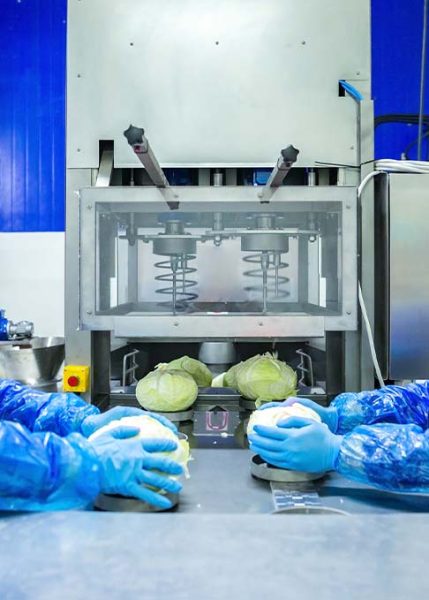
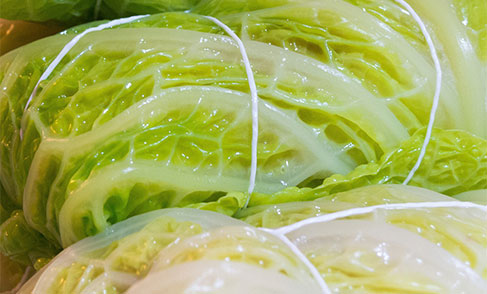
A 5-6% clear solution of table salt is added to the heads of cabbage that will be pickled whole. In the first stage of pickling, which lasts about seven days, the air temperature in the pickling room must be at least 16°C. After the stormy pickling process, the cabbage settles in the fermentation pool or container, so its load should be checked, and the internal one should be checked the wall of the fermentation pool or container should be cleaned with salt water.
For measuring salt in brine that is added to cabbage, use Digital Refractometer for Measuring Sodium Chloride in Food – HI96821
HI96821
Digital Refractometer
For Measuring Sodium Chloride in Food
The HI96821 is a rugged, portable digital refractometer designed for sodium chloride (NaCl) measurement. The HI96821 displays NaCl concentration four different ways: g/100 g, g/100 mL, specific gravity, and °Baume. The instrument’s high accuracy and simple operation gives reliable results each and every time.
All readings are automatically compensated for temperature variations and displayed with a 1.5 second response time. The sealed flint glass prism and stainless steel well are easy to clean. Just wipe with a soft cloth in preparation for the next sample.
All readings are automatically compensated for temperature variations and displayed with a 1.5 second response time. The sealed flint glass prism and stainless steel well are easy to clean. Just wipe with a soft cloth in preparation for the next sample.
After the end of the stormy pickling process, the air temperature in the pickling plant is maintained at a level up to 25°C with occasional supervision. Depending on the size and firmness of the heads, the process of pickling cabbage is continues for the next six to eight weeks.
Since measuring temeprature is crucial parameter in sauerkraut production, temperature needs to be measured. For this application you can use several models form Hanna Instruments.
HI148-2
Waterproof Thermologger
for continues measuring and logging
From storage to shipping, it’s important to monitor the temperature of your products to ensure that they are being stored in optimal conditions. Quick to setup, simple to use, the HI148 Thermologgers are ideal for monitoring temperature in applications such as food processing, transportation, museums, and horticulture.
- Models available with one or two channels, internal and/or external sensor.
- Programmable high and low alarm LEDs flash for quick viewing.
- Automatically log your results and view with included software.
HI93501
Thermistor Thermometer Foodcare
Designed with user functionality and performance in mind, the HI93501 is a waterproof thermistor thermometer that measures temperature from -50.0 to 150.0°C (-58.0 to 302.0°F). The included batteries provide up to 4500 hours of continuous use. CAL Check™ and the Battery Error Prevention System (BEPS) ensure the highest level of accuracy and confidence. The probe is replaceable and works with an assortment of specialized probes. This meter can be certified as traceable to NIST standards upon request.
- ±0.1 °C/ ±0.2 °F accuracy
- Enable automatic shut off after 8 minutes, 60 minutes, or disabled
- Perfect for the spot checking of food in kitchens, at barbecues, and catering
In spontaneous sauerkraut fermentation, Leuconostoc mesenteroides initiate the fermentation process, followed by the growth of other lactic acid bacteria (LAB), mainly Lactobacillus brevis, Pediococcus pentosaceus, and Lactobacillus plantarum species, among which L. plantarum is responsible for the second phase of fermentation and high acidity of the produced sauerkraut.
A completely fermented sauerkraut contains 1.8–2.3% acid (calculated as lactic acid) giving a pH of 3.5 or less.
To measure pH value you can use several pH meter from Hanna Instruments.
HI98161
Professional Foodcare Portable pH Meter
The HI98161 is a rugged, waterproof, portable pH meter that measures pH and temperature using the specialized FC2023 Foodcare pH electrode. This professional, waterproof meter complies with IP67 standards. The HI98161 is supplied with all necessary accessories to perform a pH/temperature measurement packaged into a durable thermoformed carrying case that holds the meters, probes and calibration buffers securely in place.
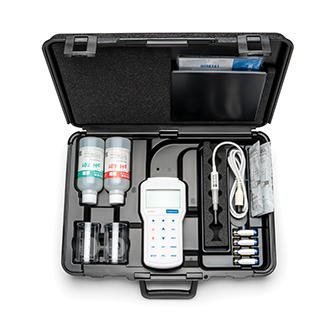
HI99161
Portable Food and Dairy pH Meter
Designed to bring simplicity to pH testing of food and dairy products, the HI99161 pH Meter for Food and Dairy is designed for use in the food sector. The specialized probe features a PVDF body, conical tip, and open junction making it ideal for direct measurement of semisolid foods.
- ±0.02 pH accuracy
- Comes with all the necessary solutions and batteries- everything you need to get started measuring right away.
- Great for use in small food and dairy operations as well as for hobbyists.
Author:
Tajana Mokrović
mag.nutr.
Tajana Mokrović
mag.nutr.

With Great Product Come Great Results
Service
Training
Rapair
Maintenance
Source:
Kwon, D. Y., Nyakudya, E., & Jeong, Y. S. (2014). Fermentation: Food Products. Encyclopedia of Agriculture and Food Systems, 113–123. doi:10.1016/b978-0-444-52512-3.00155-8
Di Cagno, R., & Coda, R. (2014). FERMENTED FOODS | Fermented Vegetable Products. Encyclopedia of Food Microbiology, 875–883. doi:10.1016/b978-0-12-384730-0.00115-4


